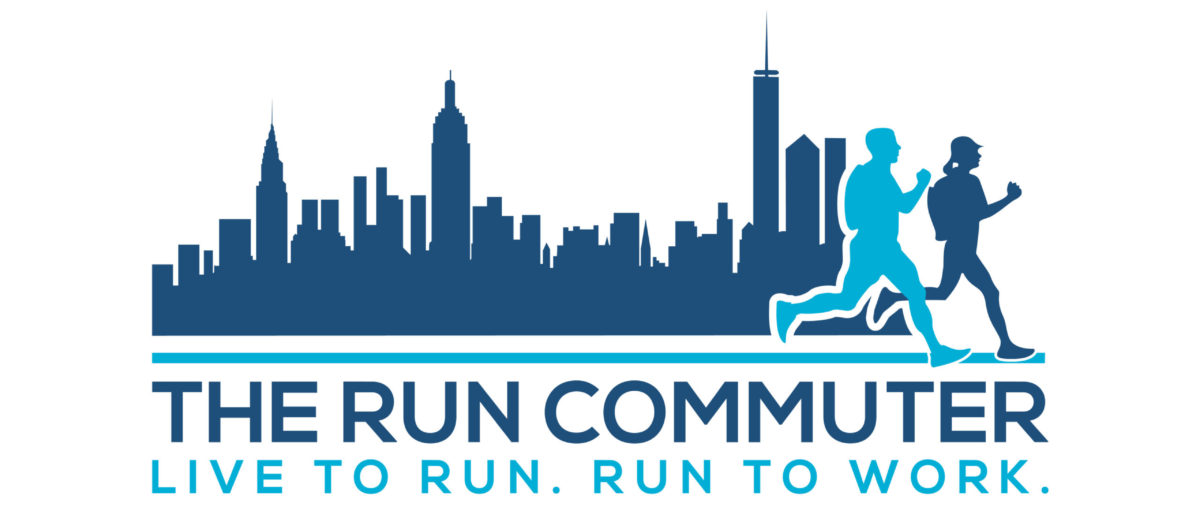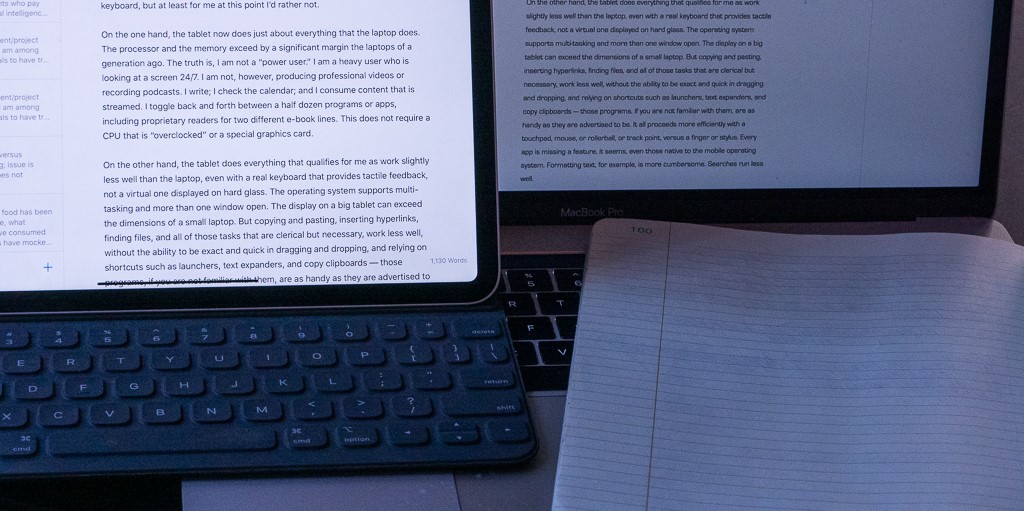I have an update about working after the run commute. Apple, among others, has been promoting the idea that a tablet can replace a laptop or even a desktop. I had an opportunity to test the proposition. The natural experiment occurred because my MacBook Pro developed an issue with the screen, and it was in the shop for a week. My report is: yes, you can work a full day in a professional job on a tablet with a keyboard, but at least for me, at this point, I’d rather not.
On the one hand, the tablet now does just about everything the laptop does. The processor and the memory exceed by a significant margin the laptops of a generation ago. The truth is, I am not a “power user.” I am a heavy user who is looking at a screen 24/7. I am not, however, producing professional videos or recording podcasts. I write; I check the calendar; and I consume content that is streamed. I toggle back and forth between a half dozen programs or apps, including proprietary readers for two different e-book lines. This does not require a CPU that is “overclocked” or a special graphics card.
On the other hand, the tablet does everything that qualifies for me as work slightly less well than the laptop, even with a real keyboard that provides tactile feedback, not a virtual one displayed on hard glass. The operating system supports multi-tasking and more than one window open. The display on a big tablet can exceed the dimensions of a small laptop. But copying and pasting, inserting hyperlinks, finding files, and all of those tasks that are clerical but necessary, work less well, without the ability to be exact and quick in dragging and dropping, and relying on shortcuts such as launchers, text expanders, and copy clipboards — those programs, if you are not familiar with them, are as handy as they are advertised to be. It all proceeds more efficiently with a touchpad, mouse, or rollerball, or track point, versus a finger or stylus. Every app is missing a feature, it seems, even those native to the mobile operating system. Formatting text, for example, is more cumbersome. Searches run less well.
Thus I am willing to bring the tablet and forego the laptop if I expect to have a day that involves being more passive than usual. If I am scheduled to be in meetings where a laptop would be frowned upon, or if I have to run around further beyond my desk, then the tablet may be sufficient and even superior. If I am thinking and creating, I need the extra functionality. It’s not computing power; it’s the user interface. I would sum up the difference as follows: the tablet is for consuming, the laptop for creating. There is a slight advantage for the tablet in terms of weight, but that is only because I have a small tablet and a big laptop; there would be no discernible difference with a big tablet and a small laptop.
The run commute, by definition, is from home to work. Probably some folks have jobs that do not involve a computer. I have not, except when I was an usher at a movie theater circa 1984. With the advent of the cloud, allowing you to store digital files and access them seamlessly across gadgets, run commuting becomes practical. There is an alternative to bringing a tablet or laptop. You could have one at each location. I have toyed with that idea. I have been too lazy to implement it though. It also would still mean having to move the object around, once I had arrived at work, just not from home to work. So I’d rather have the convenience and comfort of consistency.
I had previously explained that I was looking for a backpack that would allow me to carry a laptop computer every day. I found it, the Ultimate Direction FastPack 15. Sometimes, I bring only a tablet; sometimes, I bring both — with a charger and even a camera.
I have to confess to a bit of craziness. Years ago, I had a different laptop in for repairs — I think my usage level and also my tendency to abuse possessions accounts for all of my equipment eventually needing a fix under an extended warranty. Anyway, while it was away, I lugged a full size iMac in a carrying case that allows for such an extreme measure. For fun, I went to a local coffee shop, and I set it up to the amazement of other patrons. I also have a few times done a “run commute” to the BART station, to ride to the airport: that is 2.8 miles with two pieces of luggage. That establishes my willingness to drag around more stuff than my minimalist philosophy would admit to.
During the time my laptop was being fixed, I even had a chance to try working on an iPhone. My wife borrowed the iPad on a flight back from our grand niece’s wedding. So I was left with an iPhone. I know I am aging, because I no longer have the same desire as before to be an early adopter of technology. I am not enthusiastic, for example, about using a smartphone, however advanced, for taking notes. It is that pesky problem of the user interface once again: until the device mind melds with a human brain, input on a screen is inefficient. You can, if need be, do quite a bit with only a phone. But you also could pick up a pen to write on paper.
Perhaps all of this will change. No doubt it is likely. Others may have developed “life hacks” better than mine.
I will conclude with the best example: this blog, generated on the iPad. I can, and I did, write it using Ulysses, a text editor that syncs up perfectly across multiple devices. I often start a document one place and finish it elsewhere, both on separate devices technologically and also in separate locations physically. To enter it into the editing software and upload the image, however, is a hassle on a tablet. It can be done, just not elegantly. So there you have it. If the compromise is worth it, to save weight, or due to work needs that are not as described here, then the tablet can be made to work. I would not substitute it for the laptop — yet.
An addendum for MacBook users. If your screen develops what appears to be a faint glow, mostly orange, in an oval shape by the lower left corner, it is not your imagination. It is a known issue with the device. The company will swap out the screen free of charge.

